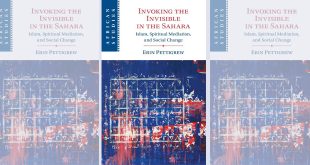The Reynolds Gallery, located on the second floor of the Memorial Student Center on Texas A&M University’s campus, will soon host a new art exhibit that emphasizes unity and acceptance of Muslim students and aims to increase understanding of Islam, Islamic organizations and Islamic art.
“We’re hoping that it will have some educational benefit, introducing many A&M students to a culture” said Pratyu Medikonda, a psychology major in her junior year at the university and the gallery director of the MSC Visual Arts Committee.
The Salam exhibition — Arabic for “peace” — will be on display from Jan. 17 to March 3, and will combine art from A&M’s Muslim Students’ Association with work from Sana Mirza, Samia Nazir, Hina Chaudhry and Nizar MacMojia from the Islamic Arts Society of Houston.
Mary Casillas, student chair of the visual arts committee and a senior biochemistry major, said there would be 15 pieces on display from the Islamic Art Society, 50 printed pictures from student artists and 10 student artwork pieces from the Muslim Students’ Association on display during the two and a half weeks of the exhibit, as well as a wall where students will write the 99 names for Allah in various styles of calligraphy.
The question the gallery seeks to answer, Casillas said, is, “What does it mean to be a Muslim student at Texas A&M University? Whether it’s good, bad or ugly.”
Sibba Al-Kahtani, a junior chemical engineering major and vice president of the Muslim Students’ Association, wrote in an email that she helped coordinate the calligraphy project, in which students write the 99 names of Allah in different styles. Al-Kahtani wrote that the project is “important because you can see how many other Muslims write since Arabic is the foundational language of our religious text and almost all Muslims have been exposed to it…Seeing how they write in Arabic is extremely personal since it’s not specific to Arabs only.”
Hina Chaudhry, a professional artist and member of the Islamic Arts Society of Houston, submitted three pieces for display at the exhibit. Creating these pieces — made of mixed media and shattered glass, some of which came from her own house after it had been broken into two years ago — “put me on the path toward healing,” she said, when she had been going through a divorce.
The pieces — titled “Shattered Pieces,” “Nur,” and “Hayya alal Falah” — speak to the importance of God in her life and as the only presence that could heal her during a time of great need.
Casillas said the exhibit will show the “many faces of Islamic art” and how it has changed across time, helping non-Muslim students see how their Muslim peers celebrate their own culture and what Salam means to them. The exhibit, she said, will “create a space for students to wander in and learn something about Islamic art and calligraphy.”
source: theeagle
 Ijtihad Network Being Wise and Faithful Muslim in the Contemporary World
Ijtihad Network Being Wise and Faithful Muslim in the Contemporary World
